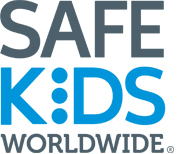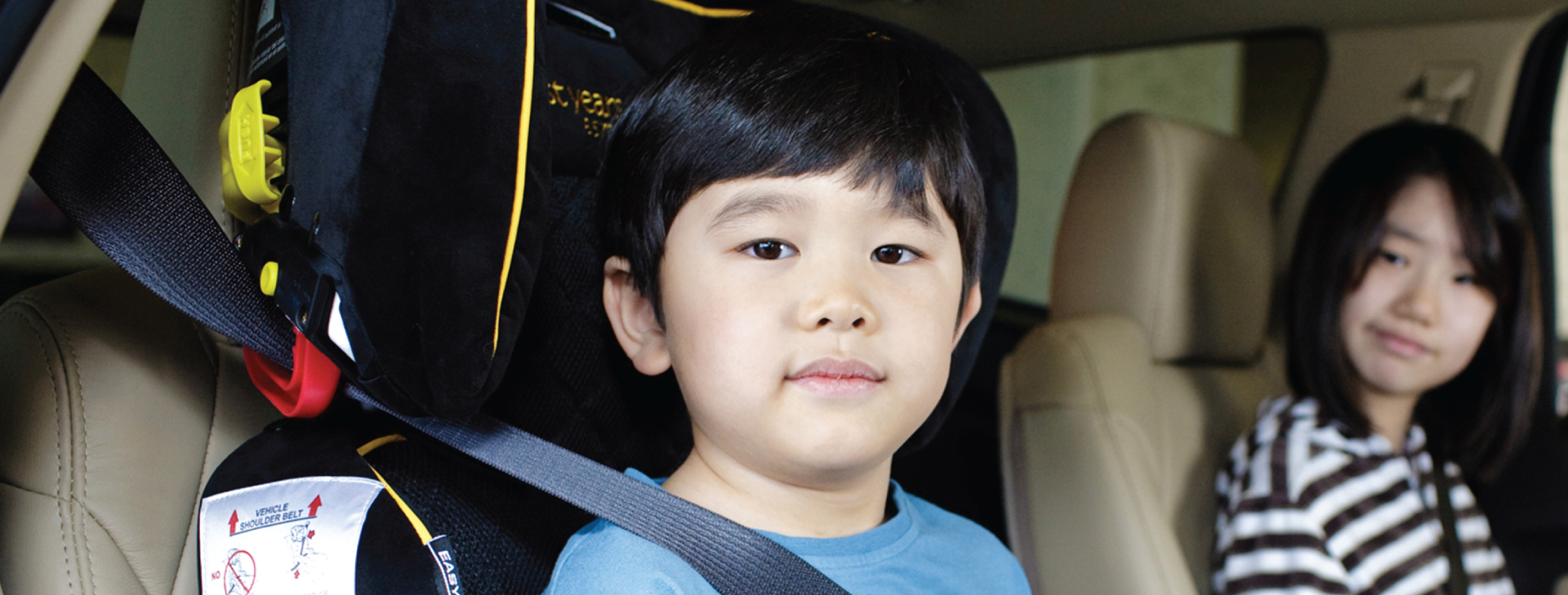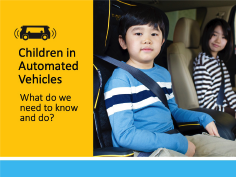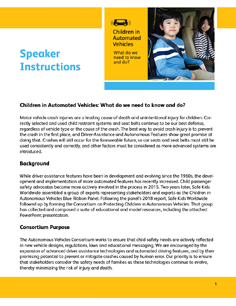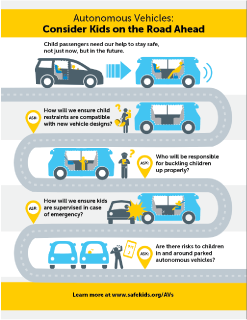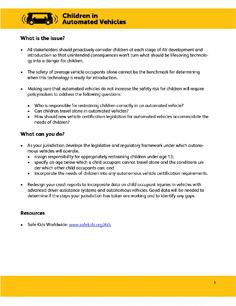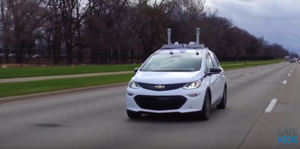You are here
Search
Has child safety been adequately considered in the push toward automated vehicles?
If you are committed to keeping children safe in vehicles, learn about how you can help advocate for child safety considerations in automated vehicles (AVs).
EDUCATE THE SAFETY COMMUNITY
The Consortium has developed an initial set of materials to help educate the safety community about children in AVs. We encourage you to use these resources and provide attribution to the Consortium. Have questions or feedback on the materials? Email us at [email protected]
Elevator Speech
Child safety needs should be actively reflected in new automated vehicle designs, regulations, laws and educational messaging. We are encouraged by the expansion of advanced driver assistance technologies and automated driving features, and by their promising potential to prevent or mitigate crashes caused by human error. We must also ensure that stakeholders consider the safety needs of families as these technologies continue to evolve, thereby minimizing the risk of injury and death.
More Resources
Contact Us About Children in Automated Vehicles
For general inquiries about automated vehicles contact Shushanna Mignott at [email protected]
For media inquiries contact Gary Karton at [email protected]
For general Safe Kids Worldwide inquiries email [email protected]
ABOUT THE INITIATIVE
ABOUT THE INITIATIVE
Although fully automated vehicles are not yet publicly available, there already exists partially automated vehicle safety features, such as lane keeping assist systems, adaptive cruise control, blind spot monitoring and self-parking, are already readily available in newer vehicle models and are helping to keep roads safer, both for passengers and other road users. Fully automated vehicles (AVs), vehicles designed to drive themselves without the attention or action of a human, are an inevitable part of the U.S. transportation system’s future.
Safe Kids has been looking to the future of child passenger safety (CPS) as it relates to AVs for several years and seeks to understand the potential challenges to child passenger safety (CPS) created by AVs and the anticipated shift in education and awareness raising efforts that will be needed to ensure the safety of children in the future.
Safe Kids in Automated Vehicles Alliance
Mission
To prevent child injuries in automated vehicles.
Leadership
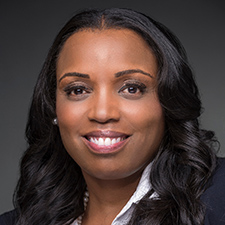
Torine Creppy is the President of Safe Kids Worldwide, a global nonprofit dedicated to protecting kids from preventable injuries. Torine works with partners, donors, legislators and community leaders around the world to develop and implement strategic initiatives, create partnerships and inspire behavior change to keep kids safe at home, on the road and at play. Ms. Creppy is a passionate advocate on Capitol Hill and is dedicated to finding new ways to reach high-risk and underserved communities.
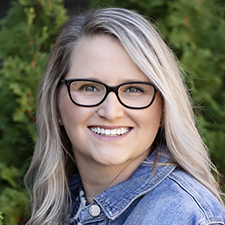
Kristy Brinker Brouwer is a Mechanical Engineering Professor at Kettering University with over 20 years of industry experience in safety restraints, occupant protection, and military robotics and autonomous vehicles. Kristy is a certified child passenger safety technician instructor.

Joe Colella has been in the traffic safety field for 28 years, beginning as a child passenger safety advocate. Joe is now the Director of Child Passenger Safety for the Juvenile Products Manufacturers Association. He is a member of the Safe Ride News editorial board and the Society of Automotive Engineers Child Restraint Systems Standards Committee.
Partners
The Safe Kids in Automated Vehicles Alliance (SKAVA) is a group of developers, manufacturers, researchers, educators, and advocates working to ensure that the safety needs of children are actively considered throughout the research, testing, and development of automated vehicles (AVs). SKAVA’s priority is to facilitate stakeholder discussion, collaboration, and action toward enhancing the safety of children as automated vehicles evolve, thereby reducing the risk of injury and death.
SKAVA Partners
- Allison Schmidt, Britax
- Dr. Ben Hoffman, AAP
- Bonnie Kozial, AAP
- Carrisa Johns, Orange County, FL
- Corey Campbell, DECA, Inc. & SAE
- Danielle Barrett, Independent Safety Restraint Engineer
- Denise Donaldson, Safe Ride News
- Dinos Visvikis, Cybex
- Emma Sartine, Children’s Hospital of Philadelphia
- Eric Dahl, Evenflo
- Gabe Capella, LHP Engineering
- Jalaj Maneshwari, Children’s Hospital of Philadelphia
- Jeff Lockie, WAYB
- Jessica Jermakian, IIHS
- Jon Sumroy, mifold
- Julie Mansfield, Ohio State University
- Shannon Parker, Newell
- Stephanie Shaw, NTSB
- Steve Neemah, LHP Engineering
- Tara Cozier, Newell
- Valentina Graci, Children’s Hospital of Philadelphia
- Kevin Gay, Uber
History of the Initiative
Blue Ribbon Panel
Safe Kids Worldwide convened a Blue Ribbon Panel (BRP) of nationally recognized child safety advocates and transportation experts in 2018 to discuss the unique safety considerations of children in automated vehicles. The BRP Children in Automated Vehicles recommendations report (October 2018) serves as a call to action for automated vehicle developers to evaluate and ensure their products are created with the protection of child passengers in mind. In the 2018 press release, the BRP specifically asked the automated vehicle industry to:
- Support child-focused regulations,
- Test automated vehicles in ways that consider child passengers,
- Design vehicles that are family-friendly,
- Conduct research on the appropriate level of supervision in automated vehicles, and
- Ensure all marketing and advertising shows children riding in automated vehicles according to best practices.
Children in Automated Vehicles Consortium
The BRP also recommended convening a multi-year consortium to monitor research and progress, and to generate ongoing policy statements and advocacy guidance that reflect an evolving field. To continue the work of the BRP, the Children in Automated Vehicles Consortium was subsequently formed to monitor developments in the AV field and implement the BRP recommendations. The Consortium, a network of subject matter advocates and specialists, was organized into two broad working groups:
- Policy/Legislation and Enforcement Working Group
- Public Information and Education Working Group
Acknowledgments
Safe Kids Worldwide would like to thank the following Consortium members for their time and dedication to exploring these issues and helping to develop this toolkit.
Consortium Members
Kristy Brinker Brouwer, Kettering University
Jessica Butterfield, Child Safety Advocate
Katie Carpenter, Safe Kids Oklahoma
Joseph Colella, Child Passenger Safety Juvenile Products Manufacturers Association
Denise Donaldson, Safe Ride News Publications
Maria Glorioso, Glorioso Law Firm
Carma Hanson, Altru Health System | Safe Kids Grand Forks
Carrisa Johns, Orange County Sheriff’s Department | Safe Kids Orange County
Deepika Kandasamy, John Snow, Inc.
Sjaan Koppel, Monash University
Jennifer Pelky, Toyota
Nan Peterson, Child Health Advocate
Kelly Powell, Community Partners of South Florida | Safe Kids Palm Beach County
Erin Sauber-Schatz, Centers for Disease Control & Prevention
Stephanie Shaw, National Transportation Safety Board
Melissa Smith, Denso
Costandinos Visvikis, Industrial Relations | Child Safety CYBEX GmbH
Heather Watson, CarseatBlog.com
Kedrick R. Wills, Idaho State Police
Danielle Wolfe, Insurance Institute for Highway Safety
We would also like to acknowledge the support of the following people who assisted the Consortium in their research:
- Aditya Belwadi, Ph.D., formerly with the Center for Injury Research and Prevention, The Children's Hospital of Philadelphia
- Sergeant Scott Carlson, Traffic Crash Reporting Unit, Michigan State Police Department
- John Hardiman, NJM Insurance Company
- Jeff Heinz, Palm Beach County Fire Rescue
- Matt Moore, Senior Vice President for the Highway Loss Data Institute
- John Siegler, Ph.D., Research Psychologist, Department of Transportation, NHTSA
- Lorrie Walker, retired Safe Kids Worldwide Training and Technical Advisor
For general information, contact [email protected].
For media-related questions, contact: Gary Karton, Content Advisor, at [email protected] or at 202-662-0630.
HOW WILL UPDATED FEDERAL REGULATIONS AFFECT CHILDREN?
HOW WILL UPDATED FEDERAL
REGULATIONS AFFECT CHILDREN?
Children should be considered before safety regulations that currently protect them—whether directly or indirectly — are amended.
Around the world, significant efforts are underway to update vehicle certification or type-approval procedures in prepa- ration for the introduction of automated vehicles (AVs). As part of that process, current vehicle regulations are being amended to remove technical barriers to AVs.
Looking specifically at the U.S., Federal Motor Vehicle Safety Standards (under Title 49 of the U.S. Code of Federal Regu- lations), which specify the performance, durability, construction, and/or design of vehicles on America’s roadways, were mostly written decades ago, when driverless vehicles were not envisioned. Therefore, some of these standards will re- quire amendments before fully automated vehicles can be legal for general use; others will be subject to scrutiny due to the perception that they add unnecessary cost to a vehicle without a driver.
However, current standards form the foundation for our approach to child passenger safety. While only certain stan- dards, like FMVSS 213 and 225, relate directly to children, child-specific standards are intrinsically related to several other standards, especially those that influence the characteristics of vehicle interiors. Therefore, to ensure child safety, any amendment to standards must be assessed for its potential influence on children, whether direct or incidental.
U.S. regulators have been preparing to amend current standards, but more must be done to consider children before changes are finalized.
Through several forms of communication, the U.S. National Highway Traffic Safety Administration (NHTSA) has ex- pressed its intention to prepare the regulatory landscape to pave the way for AVs. For instance, since 2016, it has pub- lished four position papers on this topic, each building on the last; the most recent paper, Ensuring American Leader- ship in Automated Vehicle Technologies: Automated Vehicles 4.0, came out in January 2020. In addition, NHTSA has initiated the rulemaking process to fulfill goals stated in this paper through two Advance Notices of Proposed Rulemak- ing (in 2019, focusing on the 100-level crash avoidance standards, and in 2020, requesting input on a framework for automated driving system safety), as well as a 2020 Notice of Proposed Rulemaking, which proposes changes to the 200-level, crashworthiness standards. These actions, though so far not more than proposals, signal NHTSA’s future plans.
NHTSA’s position papers do not address the agency’s commitment to the safety of child passengers in AVs. In the rulemaking documents, NHTSA gives some attention to how proposals may affect children, and the public is empow- ered to add more child-centered input to any rulemaking discussion through the comment process.
Therefore, the Consortium developed the following documents in 2020 to anticipate elements of current standards that, for the sake of child passengers, should be preserved, taken into account, and/or updated. These documents, shared here to alert AV developers, policy planners, and lawmakers to the needs of children in the regulatory process, include:
HOW CAN REGULATIONS AVOID UNINTENDED CONSEQUENCES FOR CHILDREN?
Considerations
Significant efforts are underway around the world to update vehicle regulations in preparation for the introduction of AVs. As part of that process, current vehicle regulations are being amended to remove technical barriers to automated vehicles. For example, traditional regulations for systems such as steering or braking do not envisage automated systems and could present legislative barriers to their widespread adoption. In the future, these and other traditional regulations may need to be amended to reflect vehicles with and without manual controls and everything else in between. Vehicles with traditional, nontraditional, and flexible seating configurations will likely need to be addressed, as well. In parallel, a suite of new regulations is being developed to ensure that automated driving systems operate in a safe and consistent manner. In some cases, the conventional ways of testing and certifying vehicles in laboratories with physical testing may be incompatible with automated systems, and novel approaches to the assessment of these technologies and functions are being established.
As regulators clear the path for AVs, it will be important to ensure that current vehicle safety levels are at least maintained and, ideally, improved upon. While children, like all occupants, could benefit from the reduction in collisions often predicted for AVs, restraint systems will still be necessary. However, a number of factors need to be considered to avoid unintended consequences for the compatibility between child restraint systems and vehicles in order to maintain the protection these afford in collisions.
HOW WILL CRASH REPORTING CAPTURE CHILD DATA?
HOW WILL CRASH REPORTING CAPTURE CHILD DATA?
The world of AV crash reporting is quickly evolving. The Model Minimum Uniform Crash Criteria (MMUCC), a minimum, standardized data set for describing motor vehicle crashes and the vehicles and persons involved, should be enhanced to include information relevant to child passengers.
The safety community must have AV reporting needs in the MMUCC Guidelines as the technology evolves, especially since the MMUCC is only updated every 5 years. Currently, it is hard for officers to ascertain the level of autonomy that a vehicle is using during a crash. Having a consistent training tool for law enforcement may make states more inclined to add these data points to their crash reporting tool.
The Consortium makes the following recommendations:
1) NHTSA should create a universal training tutorial to assist law enforcement officers/first responders to better know and understand how to ascertain the AV capability and use in vehicles at the time of a crash. Specifically:
a) NHTSA should add “best practice” crash reporting tools to their website.
b) NHTSA should create a “train the trainer” video or on-line training module for law enforcement officers to be educated on how to complete the AV section and child passenger safety restraint portion of the crash reports.
c) Encourage incentives to states to update their crash reports to be more consistent with NHTSA/MMUCC Guidelines.
2) Propose the following changes to MMUCC for considerations of the on-scene and advocacy role of law enforcement and first responders:
Reason for change |
Specific Change Requested |
|---|---|
As we review crash data where children are involved, it is helpful to know their weight to determine if the type of restraint they were using was appropriate. |
Child(ren)’s approximate weight (for children under age 13) |
We want to know the initial impression of the officer as to the fault of the crash (who or what). If the AV features are engaged, it will be important to know if there is a technology fault that needs to be addressed. |
Who or what is at fault in the crash as determined by the on-scene officer. |
As we move into the new opportunities that will present with AVs, there could come a time when children are riding alone in these vehicles. While this data being asked for will certainly help child passenger safety advocates with crash analysis now, having LE officers well versed in collecting this information will be important for the world of AV transportation that lies ahead. |
If a car seat was used, how was it installed? Lower anchors _____ Top tether _____ Seat belt _____ Not attached /secured _____ Unable to determine _____ Who installed the seat? ________________ Was the seat choice and direction appropriate for the child? Yes _____ No _____ Unable to determine _____ |
3) Update Vehicle Identification Numbers (VIN) to include the vehicle's SAE automated level for consistent crash data collection and reporting purposes. Knowing the AV level of the vehicle will help determine whether the crash and/or child injuries sustained in the crash were potentially avoidable.
Other Resources
- The MMUCC guideline manual Section on AV reporting/data collection (begins on page 121 hard copy/127 on-line)
- This report offered by John Siegler on the discrepancy in reporting on a state-by-state basis was given at the 2018 Traffic Records Forum.
- This report by the National Safety Council also points to the importance of states having accurate and complete traffic crash data collection.
- State example: Michigan has a very comprehensive crash report with information on AV features.
THANKS FOR SIGNING UP FOR E-NEWS | Safe Kids Worldwide
Thank you for signing up to stay informed about what Safe Kids Worldwide is doing to address the unique needs of children in automated vehicles.
In the meantime, we encourage you to explore this toolkit and let us know how you're using these resources.
For general inquiries about autonomous vehicle contact Shushanna Mignott at [email protected]
For media inquiries contact Gary Karton at [email protected]
For general Safe Kids Worldwide inquiries email [email protected]
HELP ADVOCATE FOR CHILDREN
Well-crafted laws save children’s lives and communicate best practices to caregivers. Consider AVs and children as an issue to discuss when you have opportunities to talk with state legislators and policymakers. The main message is that very little is being discussed about the implications of having children in vehicles without a driver. But there are critical concerns, some of which need to be addressed in legislation.
- At what age should a child be allowed to ride in an AV alone?
- Who has the responsibility for ensuring a child is properly restrained in an AV?
We urge you to consider being an advocate for children in AVs. Given the rapid pace of change with this technology, we cannot afford to wait to communicate about the unique needs of children.
Learn if AVs Are on Your Community’s Roads
NHTSA is collecting information about AV test locations on public roads from states and companies in the test tracking tool below.
